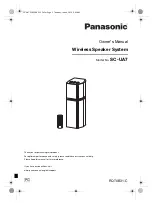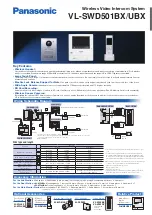
www.lightingandsoundamerica.com
•
April 2007
•
79
78
•
April 2007
•
Lighting
&
Sound
America
ARCHITECTURE
million high school facility. “The
project was on the scale of a small
town,” says Cosler of the
construction, which took place on
the site of the old school. “The
amount of earth moving and civil
engineering that went into this
project was tremendous.” The new,
technologically equipped theatre,
which opened in 2005, replaces an
auditorium of comparable size that
accommodated outside productions.
“It wasn’t a very good auditorium,
but it was large, and they had a
community concert program,” the
consultant says. The new venue is
just one piece of a grand 21st-
century plan for the school; related
items include a black-box theatre
and TV studio, also developed under
Cosler’s supervision.
Taking the Wright approach
Cosler says that his company’s
design role on the Watchung project
extended further, from the
architectural lighting to the finishes.
“We were hired directly by the school
district to work with an architect,
Feitlowitz and Kosten, who had not
designed a theatre of this complexity
before. So we basically took the lead
in the design of the auditorium. It
was our idea to go with this sort of
[Frank Lloyd] Wright-ian idea of
having a necklace that frames the
room.” A perimeter shelf extends
around the side and back walls of
the space; along with the
auditorium’s reverse fan shape, it
serves an acoustical function. “You
start out with a sort of megaphone in
front,” says Cosler, “and then the
back walls are tipped in, because the
acoustician asked us to pinch the
back. You basically have the sending
end of the room and the receiving
end of the room, and you’re bringing
the walls in to try to capture as much
of that energy as possible before it
decays completely.”
Cosler subcontracted the
Watchung acoustical design to Dan
Clayton, of Clayton Acoustics Group,
The reverse fan shape of the Watchung
auditorium has acoustical benefits. The
room’s design is influenced by the work
of Frank Lloyd Wright.
PHOTO: NORMAN MCGRATH
who worked with Chris Brooks, of
Orpheus Acoustics, on the project.
“The reverse fan is a very good
acoustical element, and it adds some
drama to the visual perspective,” says
Clayton. As for the perimeter shelf, “it
gives us some very good side wall
lateral reflections, and it also hides the
fact that there are 20' or more of
auditorium above, holding the lighting
catwalks, HVAC duct work, and so on.”
A forestage reflector of the same
design and material as the shelf,
although twice as deep, helps to
project sound into the house. Clayton
specified variable acoustic curtains for
the side walls, with one set placed
below the shelf and one above to
provide an absorption-reverberant
cap. The lower set of curtains has
a zigzag design that echoes the
shaping of the portals around the
proscenium. “Rather than have a
single plane at an angle from the
edge of the proscenium out to the
side walls,” says the acoustician,
“there are bands at right angles
that step out. That sends lateral
sound very quickly back into the
audience.”
Cosler designed the
proscenium portal with adjustable
tormentors and teasers for
maximum flexibility. “The problem
with most high schools is you
have to have a fairly wide
proscenium to get the band or
orchestra on the stage,” he says.
“That’s why, when you see most
high school auditoriums, you’ve
got the wide opening with a low
height, and it looks like this funny
horizontal window rather than the
proper proportion. Here, we were
able to get a nice high stage,
about 48', with a 24' high
proscenium, and the portal with
separately adjustable header and
legs, so you can vary the aperture.
You can bring it down for drama or
open it up for music, so the shell
is forcing all the sound into the
auditorium, not containing it in that
stage house.” The stage also has
an adjustable orchestra shell that
can accommodate a variety of
sizes and types of musical
performances. “It comes in
multiple pieces, and you can play
a lot of games with the height and
angle of how the ceiling pieces are
set,” says Clayton.
Cosler says that it’s common in
high school projects to have a grid
at just under 50', “because you
don’t have to do all the fire
protection in the stage house—the
Cosler: “In most of our high school projects, the bar has
been raised. It’s no longer the high school auditorium that
we grew up in. They are bumping up to the level of
performing arts centers, and they’re even calling them that.”





















